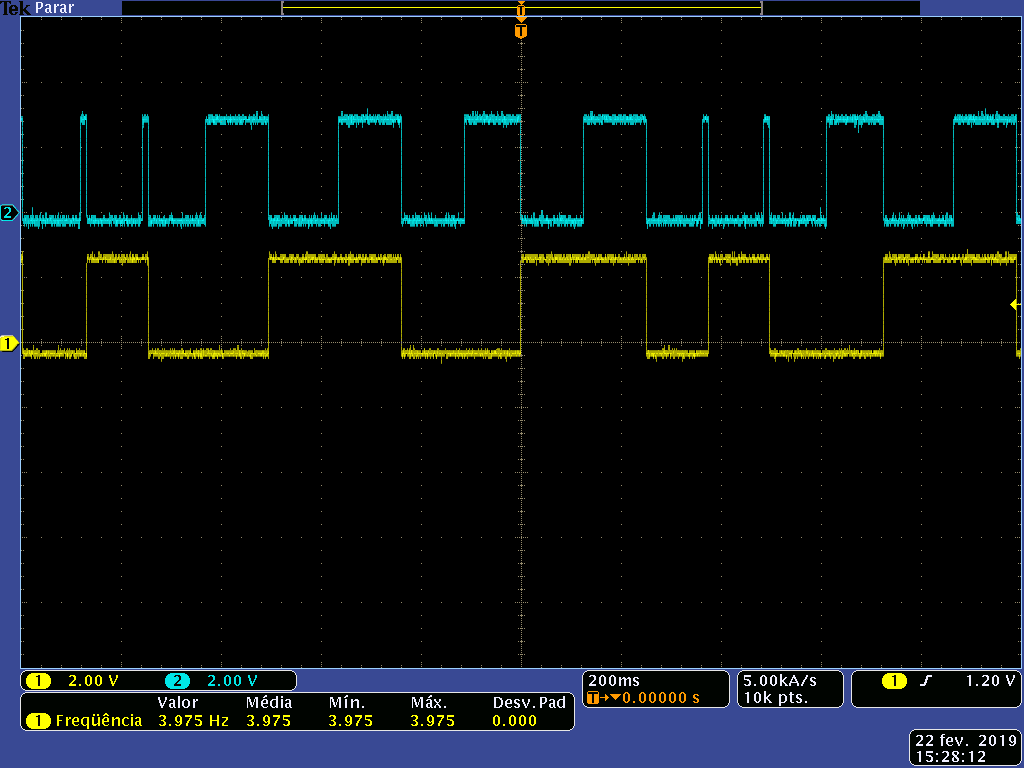Tool/software: Code Composer Studio
Hello,
We are currently working with the aoa_receiver and the aoa_sender project of the simplelink academy 2.30.28.
The problem that we are having is that the aoa_sender is configured with 100ms
#define DEFAULT_ADVERTISING_INTERVAL 160
To aliminate channels problems we are advertising only on channel 37 and the receiver is listen only on channel 37 too.
We are giving a toggle on the LED1 every packet that arrive, and a toggle on LED0 every AoA packet that arrive (2 packets).
As you can see on the image below, some times the radio doesn't send on the right time.
We already did the fix on the sitck post for the simple link 2.30.28.
Thank you.


